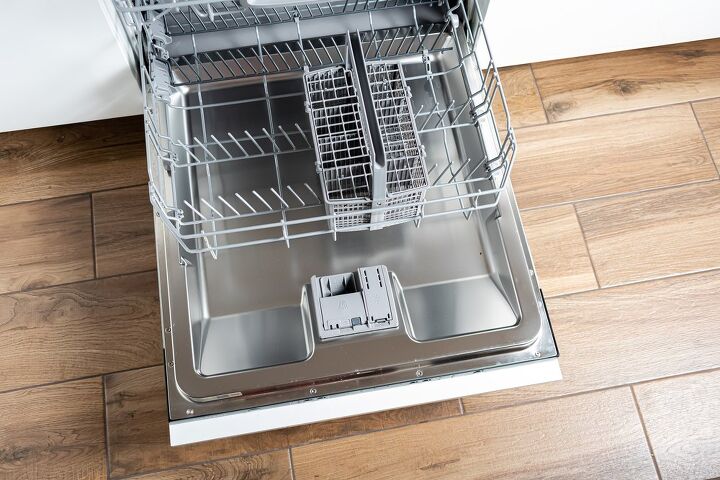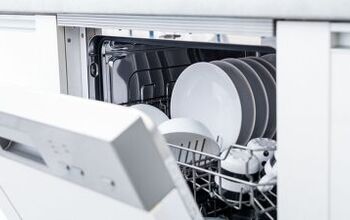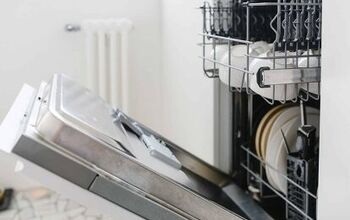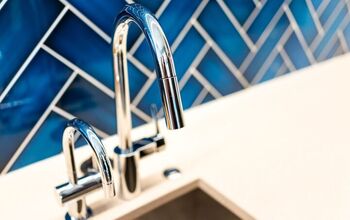Is An Air Gap Required For Dishwashers In California? (Find Out Now!)

After enduring so many nights of doing the dishes, you’ve finally been able to save up to get a new dishwasher. It’s a cause for celebration! Adding that new dishwasher to your home kitchen is going to make a huge difference.
Make sure you check out the laws in your area before proceeding with installation though. In California for instance, homeowners have to abide by certain guidelines if they want to install a dishwasher. One of those rules pertains specifically to air gaps.
Installing an air gap is a necessity if you want to use a home dishwasher in California. According to California law, the air gap must be approved and it should also be installed on the discharge side. The air gap should also be installed with its flood-level marking at or above the sink’s flood level.
As a homeowner, you need to be more aware of local laws regarding new appliances you want to use. In this article, we’ll focus specifically on dishwashers and the need to include air gaps. Read on to learn more about this important topic.
Do You Need Handyman Services?
Get free, zero-commitment quotes from pro contractors near you.

Do You Need an Air Gap on Your Dishwasher?
The dishwasher can be a pricey investment. Spending extra to install an air gap alongside it may not appeal to you because it’s an additional expense. If you live in California though, you may not have a choice in the matter.
According to the California Plumbing Code, all home dishwashers connected to a drainage system must be accompanied by an air gap. That rule still applies even if the dishwasher is connected to a food waste disposer.
There are additional rules in place governing the air gaps used. For instance, any air gap to be used must be properly approved. When it comes to installation, the air gap should be located on the discharge side of your dishwasher.
You should also pay close attention to the flood-level marking. That flood-level marking must be right at or above the sink’s flood level. The California Plumbing Code indicates that you should go with whichever point is higher.
What Is the Purpose of an Air Gap?
If you’ve never had a dishwasher before, you may be wondering what an air gap even is. You can speculate that it’s important since it’s required by law, but what does it really do for your plumbing? The air gap’s job within the dishwasher ecosystem is very simple. It’s a fixture designed to prevent any backflow from making contact with your dishwasher.
Backflow is just plain unpleasant. It refers to the phenomenon of water moving in the opposite direction of where it’s supposed to go. That may not seem like a big deal at first, but it can actually be quite dangerous.
You see, backflow isn’t just regular old water moving through your pipes. More often than not, backflow is the wastewater that’s supposed to move away from your home and enter the drainage system. It’s the water that has already been contaminated with the waste we previously discarded.
Obviously, you don’t want that nasty liquid making contact with your dishes. That’s exactly what the air gap is designed to prevent.
How Does an Air Gap Prevent the Occurrence of Backflow?
Backflow cannot occur without a cross-connection. The cross-connection is a point in the plumbing system where different streams of water can potentially intersect. If there is a potential cross-connection present in your plumbing, a change in pressure level can quickly cause backflow.
Knowing that, your goal should then be to eliminate possible cross-connections, right? That’s where the air gap comes in.
The air gap is responsible for creating a good amount of separation inside your plumbing system. With an air gap in place, the disposal unit and the dishwasher no longer have to be in contact. You can effectively separate them for good and eliminate the chances of backflow occurring.
To pull that off, the air gap creates two kinds of connections. One connection features a link between the air gap and your food waste disposer. The other features the air gap in contact with the dishwasher. If the system works as intended, the air gap will stop any contamination from happening. The water will still flow along your pipes with the air gap facilitating its smooth progression.
The air gap can also allow air to enter your plumbing system. That’s important because the introduction of air prevents the accumulation of suction force. With no suction force present, the dirty water cannot be forced down into your dishwasher.
How to Install a Dishwasher Air Gap
Homeowners can install air gaps on their own or assign the job to a professional. If you’re opting for the former, following the steps below should help you out.
Step 1: Locate and Uncover the Opening for the Air Gap
Look at the area around your kitchen sink and check if there’s an opening there. The hole should be around 1-3/8” and it is supposed to accommodate the air gap.
If a hole is already present, you can just remove the cap concealing it. You can do that by removing the screw located underneath the cap.
Optional Step: Create an Opening for the Air Gap
Things will be a bit trickier if there is no pre-cut hole present on your sink. You will have to find a suitable spot for the opening and tape off the portions of the countertop around it. After that, you can use a drill and hole saw to create the opening needed.
Going through the countertop can be risky though. You could end up dealing lasting damage to the countertop if you aren’t careful with the drill. This is the kind of job you should consider leaving to the professionals if you have expensive countertops installed.
Step 2: Attach the Air Gap to the Dishwasher Hose
Look for the dishwasher hose and start sliding it over the smaller leg of the air gap. Go ahead and use some hose clamps next to lock the connection in place.
Step 3: Connect the Air Gap and the Disposal Unit
Measure out a length of tubing that comes out to about 7/8” and be as precise as possible. Once you’re confident with the measurement, cut the tubing using a saw.
Grab that length of tubing now and position it between the air gap and the disposal unit. Slide one end of the tubing over the leg of the air gap that’s still exposed. You can then connect the other end of the tubing to the disposal unit.
Use some hose clamps to secure the connections you made. Make sure you attach the clamps correctly to prevent any potential leakage.
Step 4: Put the Air Gap in Position
Go underneath the sink now and find the opening for the air gap. Next, ask an assistant to grab the air gap from above the opening and have them pull it into place. You can now work on securing the lock nut along the air gap’s threads from below.
Step 5: Cover the Air Gap
All that’s left now is to place the cover back over the air gap. Putting the cover back on isn’t necessary, but it does conceal the air gap nicely.
Are There Alternatives to Using Air Gaps?
We’ve already established that an air gap is needed for using a home-based dishwasher in California. But what if you live somewhere that doesn’t require using an air gap? Are there alternatives to using an air gap?
There are indeed alternatives available. They are the high loop and the standpipe.
The high loop is basically a way of arranging your dishwasher’s drain hose that helps prevent backflow. Meanwhile, a second standpipe installed underneath the sink can speed up the process of waste disposal.
High loops and standpipes are reasonable alternatives, but they aren’t without faults of their own. For instance, high loops are still prone to failure while standpipes are difficult to install. You’ll be better off just sticking to the air gap if doing so is possible.
Do You Need Handyman Services?
Get free, zero-commitment quotes from pro contractors near you.

Related Questions
How Much Will a New Air Gap Cost?
The cost of adding an air gap can vary quite significantly depending on what kind of fixture you want to add. The material makeup of the air gap is the main factor that makes the biggest difference in terms of cost.Plastic air gaps are affordable, with their prices ranging from about $5 to $20. Brass and metal air gaps are typically more expensive. They usually fall in the price range of $15 to $30.Getting the air gap professionally installed won’t cost you a lot of money. It’s a tack-on service to the dishwasher installation that will cost an extra $5 to $15.
Are Air Gaps Susceptible to Leaking?
Yes, leaking is still a potential issue for air gaps. Clogs that form along the water lines and the air gap itself may eventually cause leaking.You can clear out the clog by using air pressure to force out any debris along the water lines. Clearing out the air gap fixture itself with the help of a pipe cleaner is also a good idea. Remember to clean the air gap and the water lines regularly to prevent leaks.
Related Guides

Gary Evans is passionate about home improvement. He loves finding out how to make improvements in the easiest, most practical, and most affordable ways. Upgrading his home kitchen is one of his ongoing hobbies. Gary is also a long-time content creator and enjoys spending his free time tending to his hydroponic vegetable garden.
More by Gary Evans



























